Ever struggled to get that perfect 90-degree angle on your woodworking project? Let’s dive into the debate: Are corner clamps a necessity or a luxury? Keep reading!
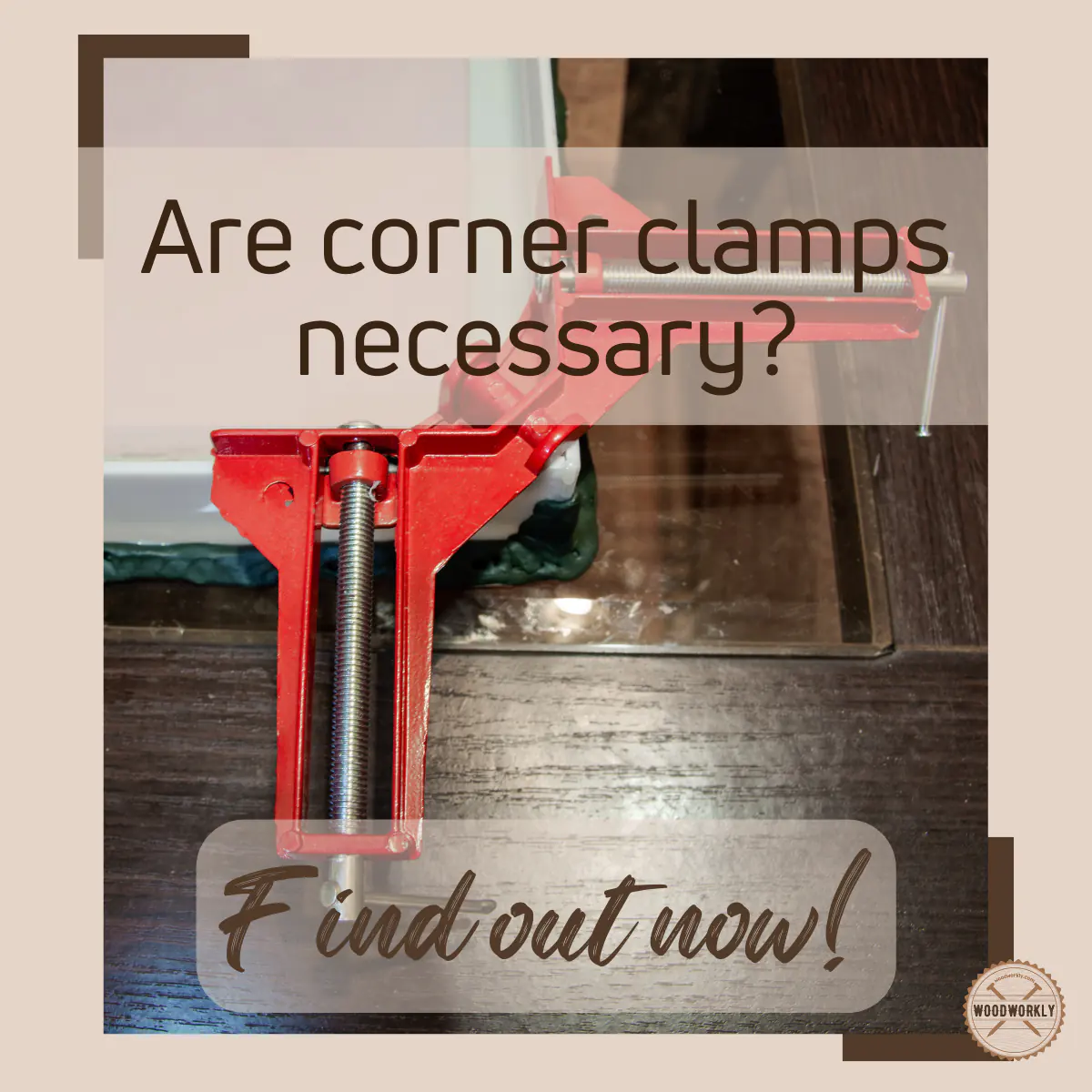
Corner clamps are angle clamps used for corners or sidings with 45-degree or 90-degree angles. They are mostly used for miter joints.
We all know that corner clamps are useful for creating strong wood joints. However, I was curious about whether they are worth the money.
So, let’s find out, Are corner clamps necessary?
Corner clamps are not strictly necessary for woodworking, but they are highly useful for projects requiring precise angles and alignments. They are particularly beneficial for making strong miter, T, and butt joints in cabinets, frames, and drawers.
But that’s a quick snapshot and there’s a lot more to know about are corner clamps necessary.

So, in this article, I’ll explore, do I need corner clamps, are corner clamps worth it, how many clamps you need, and the best corer clamps for any project.
Furthermore, I’ll answer some frequently asked questions as well.
Just keep reading!
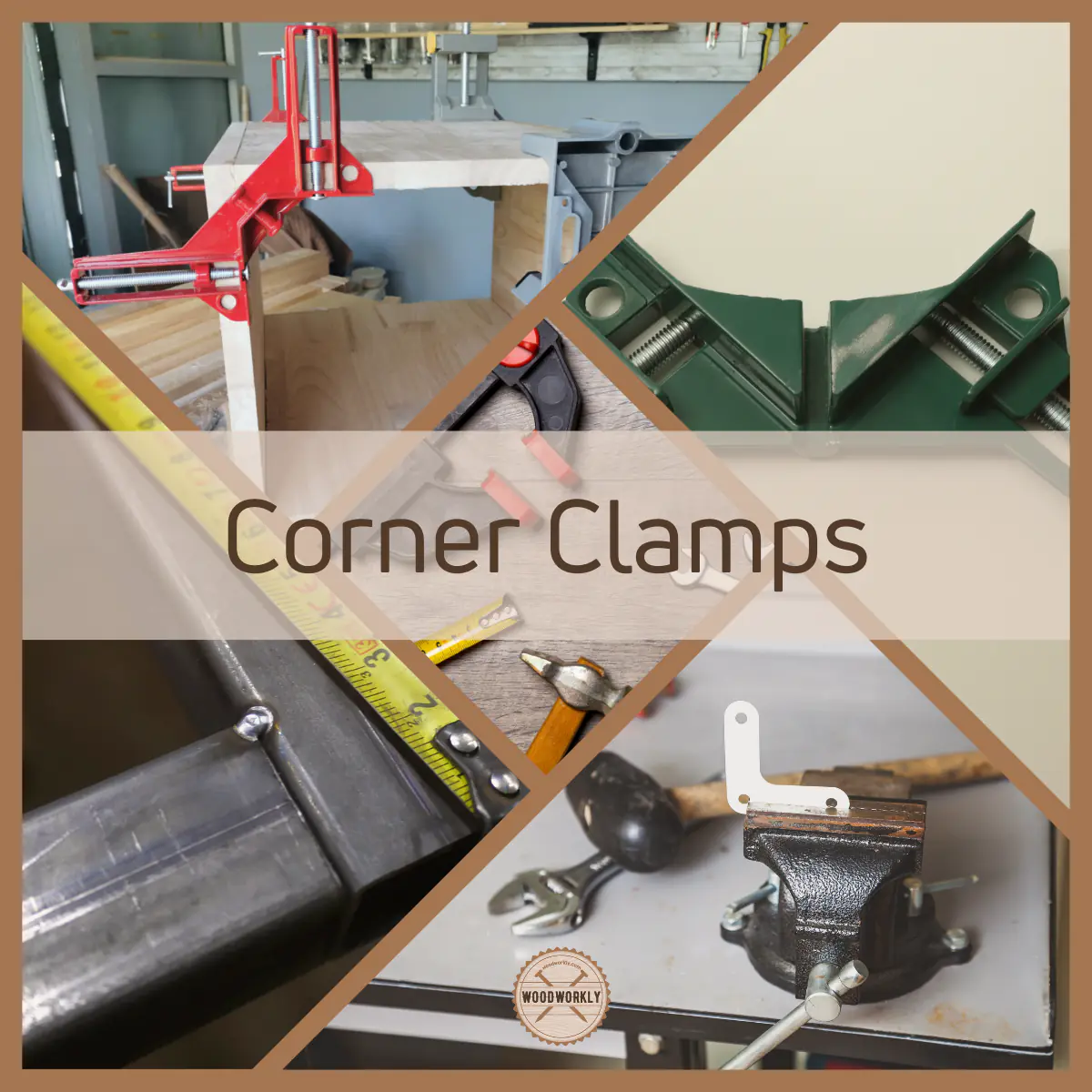
Do I Need Corner Clamps?
You don’t need corner clamps for small projects that don’t require to have accurate alignments.
But for the projects that cut square and to the same length and require accurate angled clamping, better to use corner clamps to hold items steady until they attach.
Therefore, I highly recommend you use corner clamps when assembling drawers, cabinets, frames, and other panels to maintain alignment and good support.
Corner clamps have two solid strips that are positioned perpendicularly to keep the wood joint between them intact.
The supporting arm and clamping face make a right angle with the help of the corner clamp. This is why the corner arm is also called the right-angle clamp.
You can easily maintain 90-degree or 45-degree angles to one another surface until they are attached by using corner clamps.
For example, when assembling drawers, the joinery, and base of corner clamps help to keep the surfaces square and in accurate alignment.
Plus, you can use wood glue that takes so long to set without worrying about the accuracy of the angle since corner clamps are able to maintain the surfaces steady without making them move until the wood glue sets completely.
Corner clamps make the clamping process easier and even a beginner in woodworking can make strong joints using corner clamps.
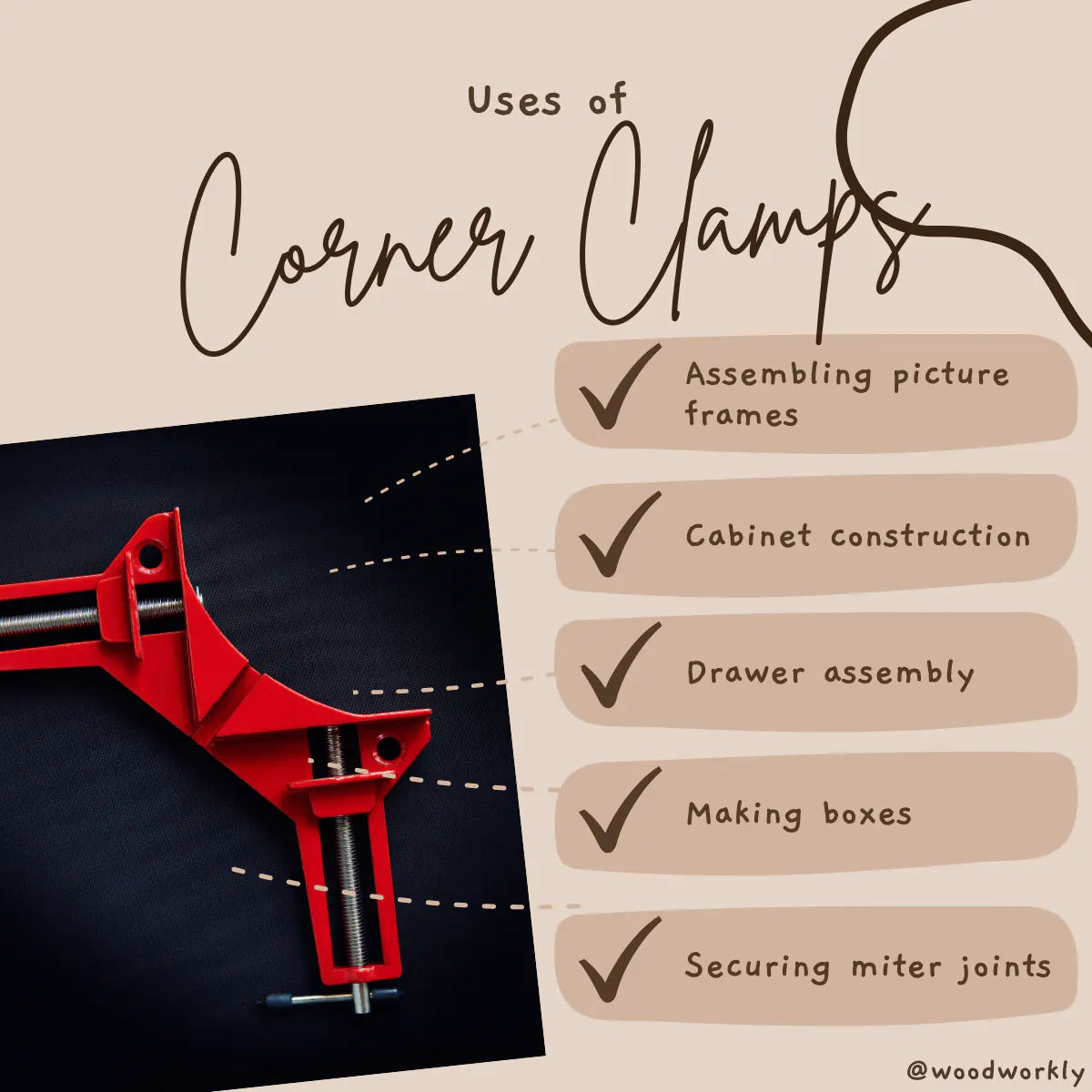
Uses of Corner Clamps
Corner clamps are mostly used for the following applications,
- Making miter joints
- Making T-joints
- Making butt joints
- Cabinet assembling
- Drawer assembling
- Making boxes
- Picture frames
- Panels
- Clamping blocks
If you want to hold the surfaces at a 90-degree angle until they are attached, corner clamps are the best woodworking tools for you.
Over time, you won’t require angle corners much since you will be so experienced at clamping.
But as for a beginner I highly recommend using corner clamps to make joints with much accuracy.
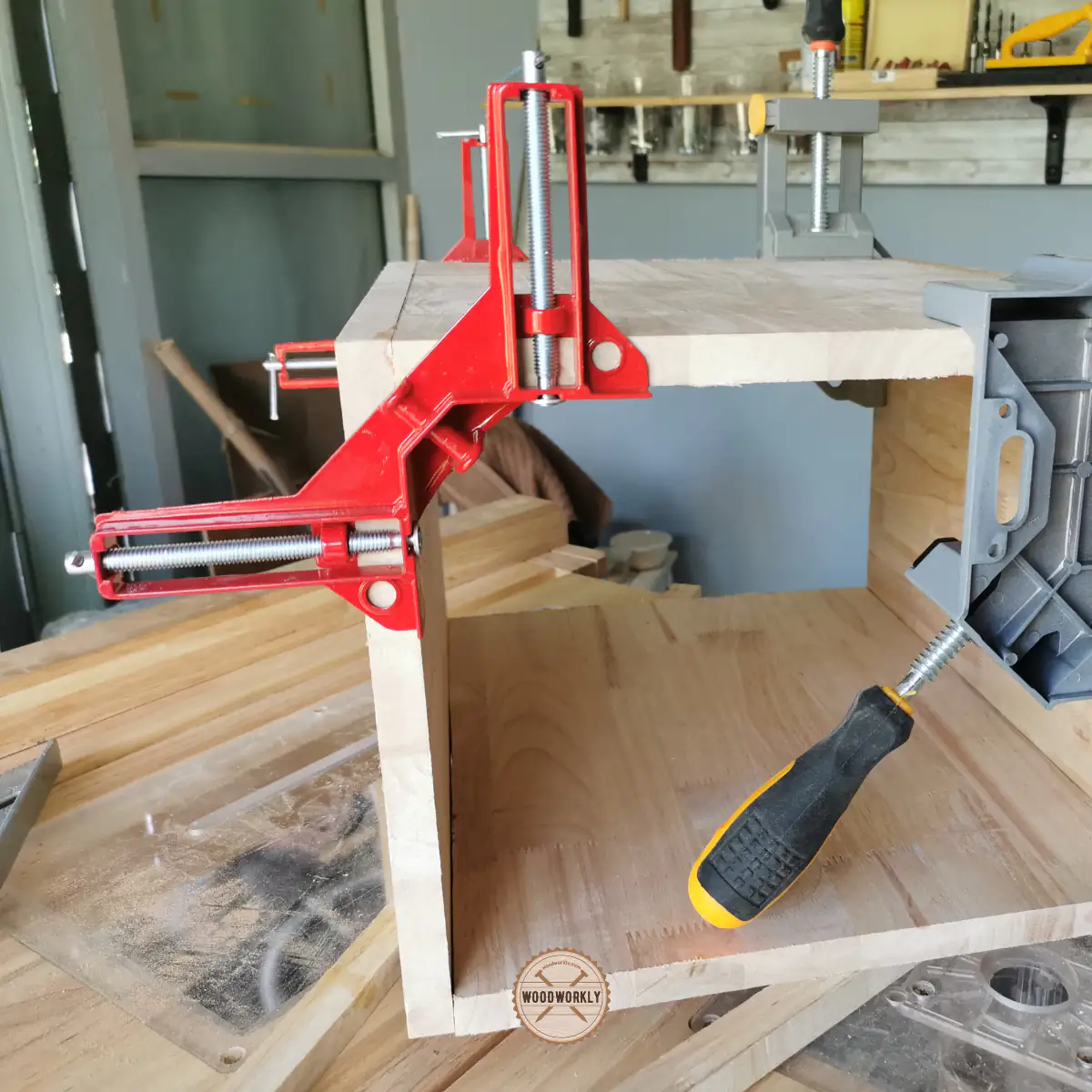
Are Corner Clamps Worth It?
Yes, corner clamps are worth it since you can make your own clamping block easily and are able to hold surfaces steady until they get attached for exactly 45 degrees or 90 degrees angles.
Therefore, corner clamps help to minimize mistakes and help to maintain accurate alignments between surfaces.
This is so helpful when you’re making picture frames since having a 90-degree angle on every square joint is a must to complete the frame.
Corner clamps guarantee both surfaces will be 90 degrees to one another for the length of the wood or width of the wood joint.
Corner clamps can be attached to the workbench or used with a free hand to stop individual movements between boards.
Plus, it can be attached to the drill pressboard for clamping items to prevent movements during drilling.
If your cuts and alignments are perfectly square, then there’s no need to use corner clamps. But using corner clamps is fun until you get there.
Corner clamps are mostly used for miter joints. Therefore, they are also known as miter clamps.
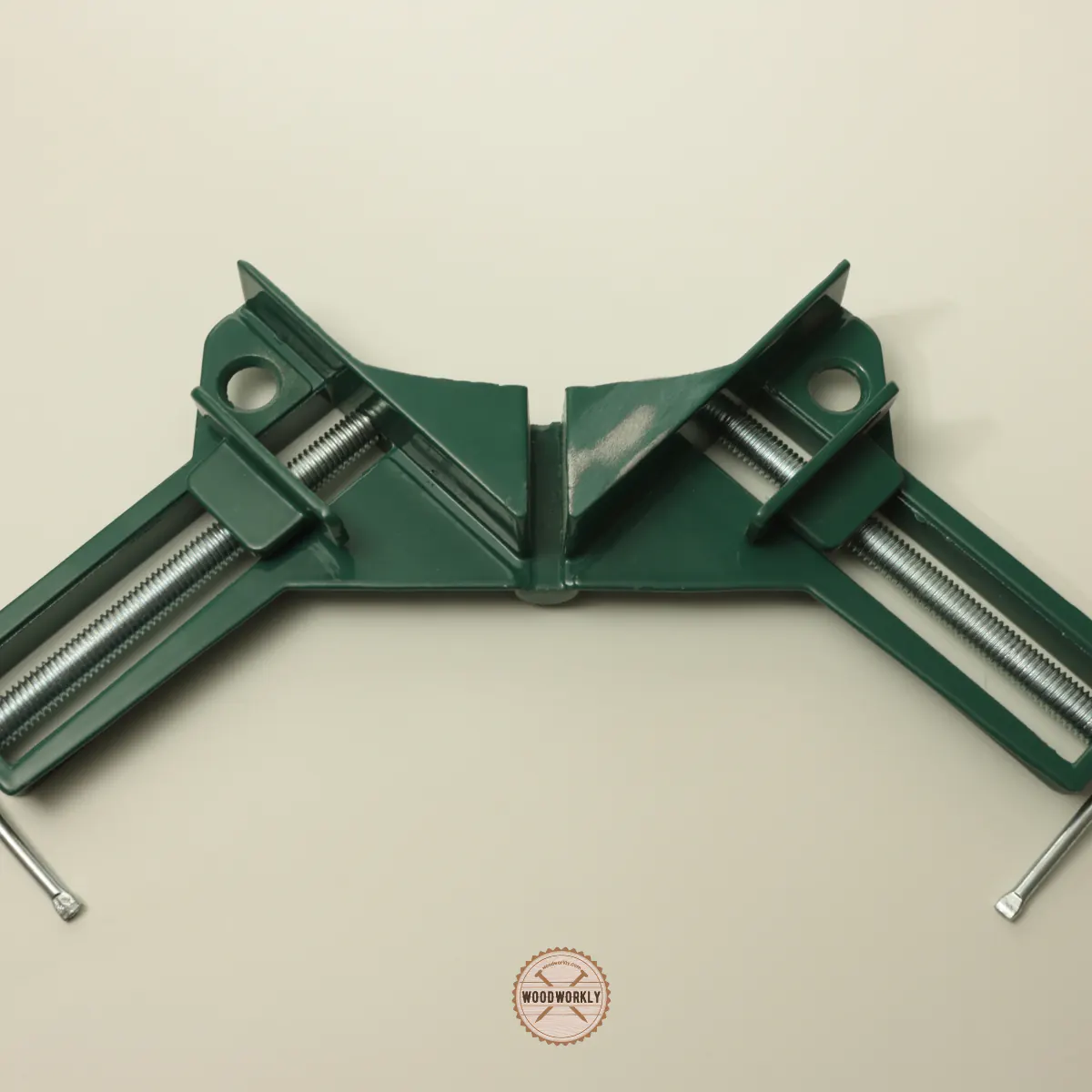
How Corner Clamps Are Useful in Miter Joints
In miter joints, corner clamps are used to maintain a 45-degree angle of each item to create a 90-degree angle between them.
You can apply wood adhesive, and wood glue, or nail them until they keep a steady 90-degree angle with no movements with the help of corner clamps.
Corner clamps are best to use for miter joints since Clamps’ jaws could be closed or opened up more for different thicknesses without mismatching the joint.
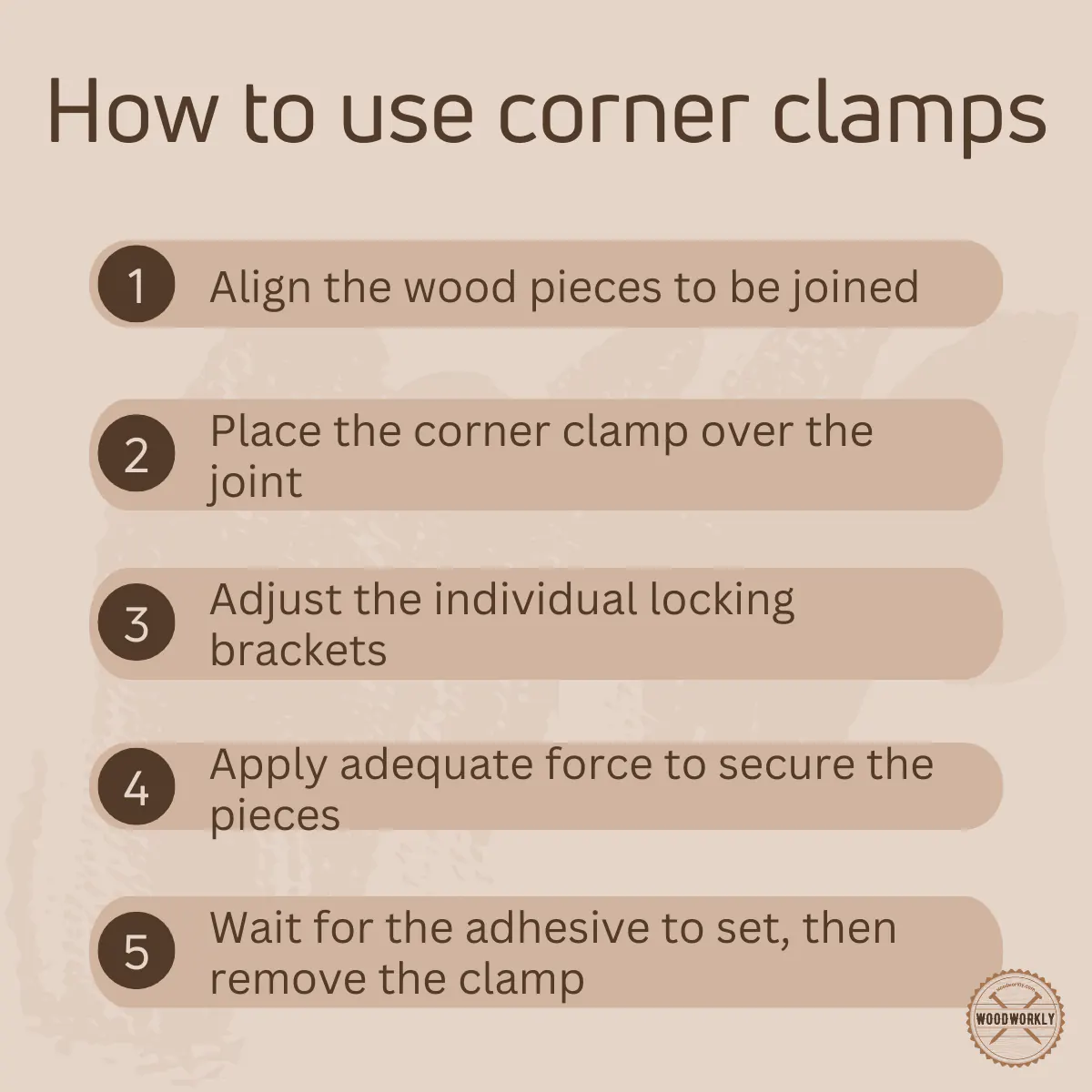
How Corner Clamps Are Useful In T-Joints
In order to maintain a “T” shaped angle between items, you need to make a perfect 90-degree joint between them.
With the help of corner clamps, you can make a steady 90-degree angle and keep it steady until they attach perfectly using glue or any other adhesive.
How Corner Clamps Are Useful In Butt Joints
Butt joints are made by joining two items squarely together with abutting edges. Using corner clamps, you can join two pieces together perfectly according to your preferred angle.
Even though the butt joint is a weak joint, using corner clamps helps to increase its strength by placing the jaws of two items together at accurate angles.
As you can see with the use of corner clamps you will be able to make strong wood joints and it makes the nailing, screwing, and gluing of wood joints much easier.
There will be no individual movements at all until you finish the project.
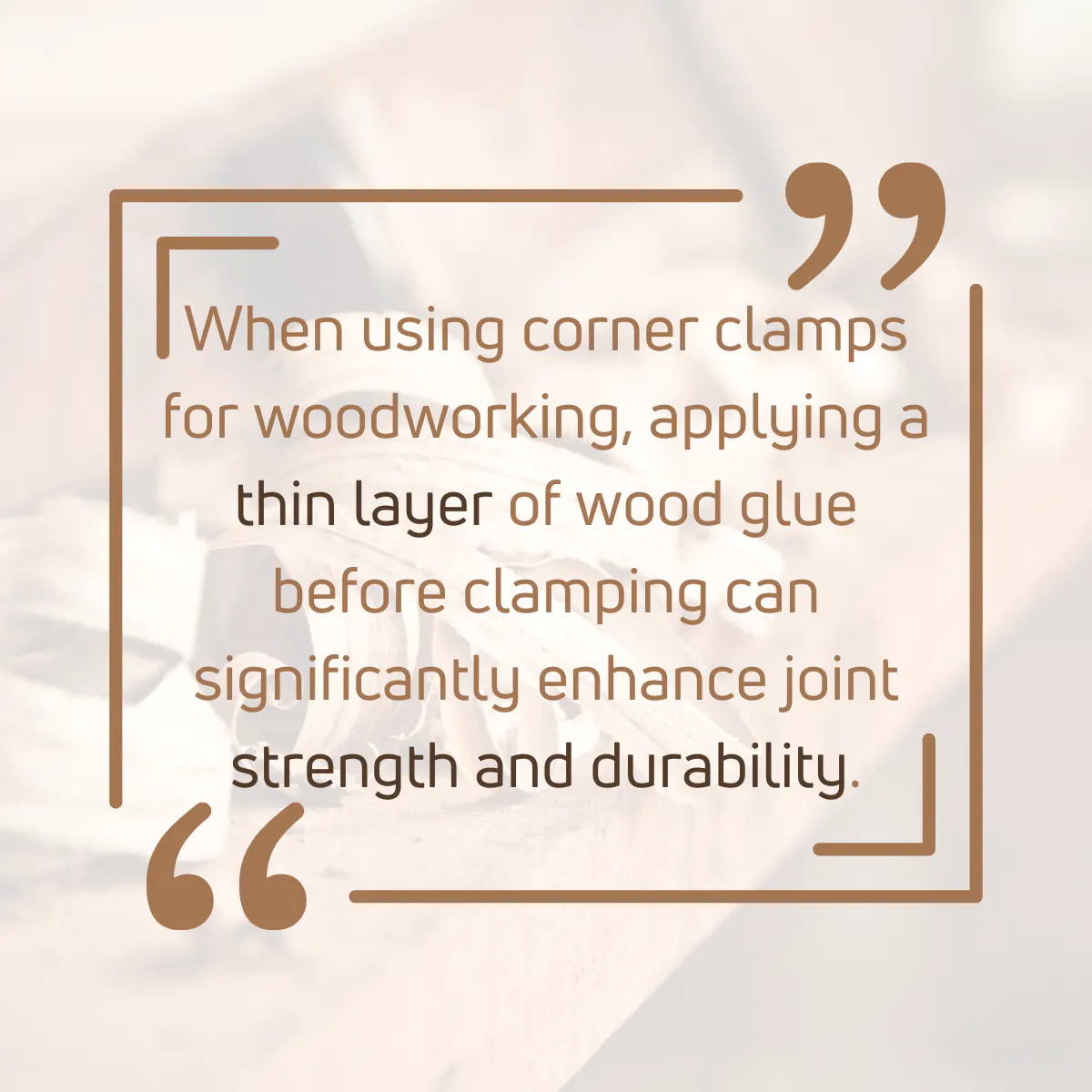
How Many Corner Clamps Do I Need?
Two corner clamps are needed for each woodworking clamp. But corner clamps are expensive. Therefore, make one joint at a time with the help of corner clamps before starting to make a new clamp.
Once you work on making a 90-degree angle joint between wood pieces with the help of corner clamps, apply adhesive or wood glue and let it set completely before starting to make a new clamp.
Remove the corner clamps from the joints once the previous joint is completely set and then work on a new one by clamping wood pieces together.
This way you can do the whole job by using only two corner clamps. But this can take a lot of time since you cannot work on more clamps at the same time.
For larger projects, you may need to use more than two corner clamps since the number of wood clamps you need to make depends on the number of wood joints you need to make at the same time.
Here’s a list of corner clamps you need to have for any project,
- Quick-release corner clamps
- Single screw corner clamps
- Double screw corner clamps
- Welding corner clamps
Get used to above-corner clamps to be a pro at clamping with high accuracy.
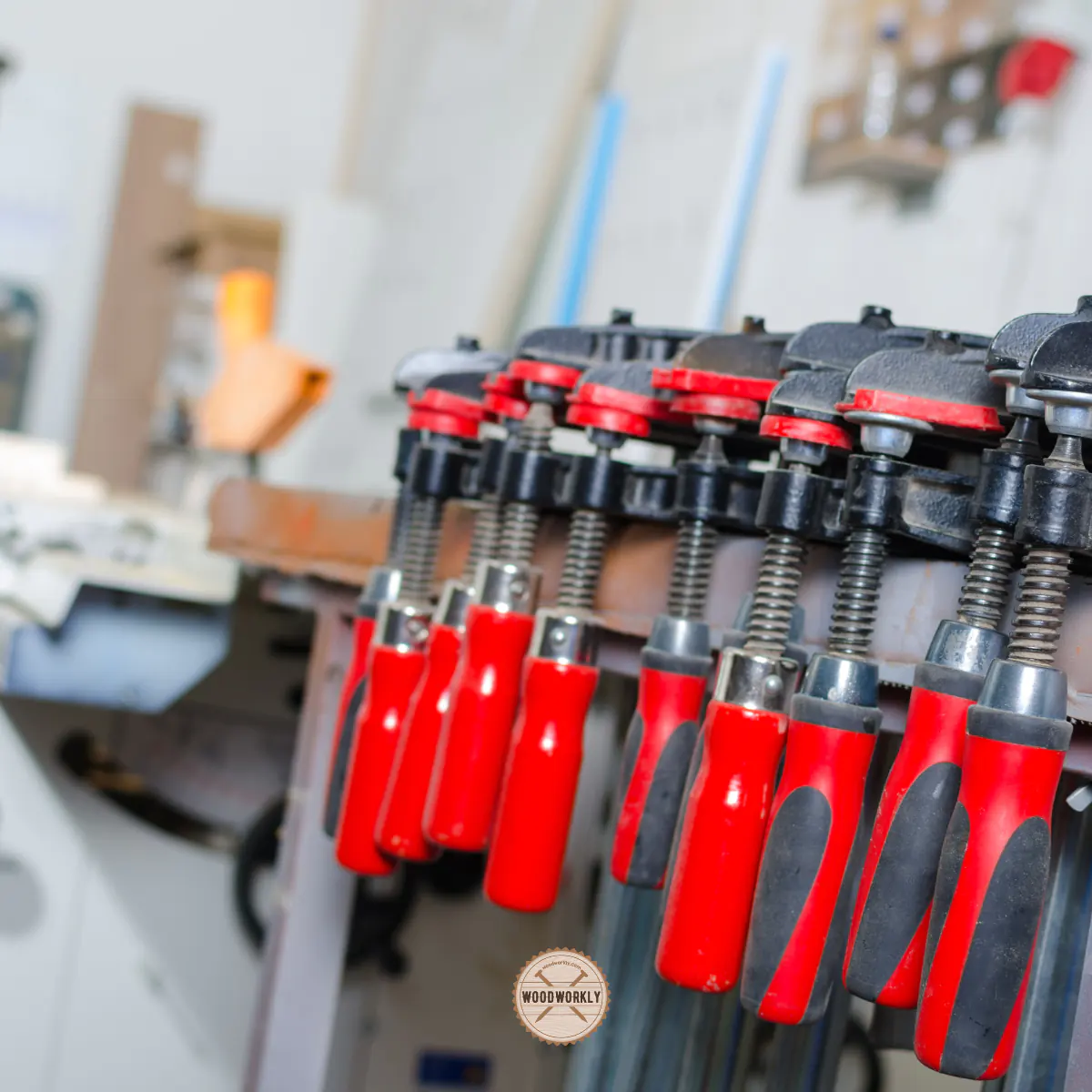
What Is the Best Corner Clamp?
Housolution Right Angle Clamp is the best corner clamp overall. But this depends on your budget and your purpose.
Over time you won’t need corner clamps anymore to make joints with precise angles.
Housolution Right Angle Clamp is easy to use and able to adjust for many different thicknesses to make good alignment between woods.
Here are some corner clamps that suits perfectly for your DIY projects,
- Housolution Right Angle Clamp
- SEDY Angle Clamp
- Kreg 900 corner clamp
- HORUSDY 90-degree right angle clamp
- WEICHUAN 90-degree corner clamp
- TACKLIFE HAC3B corner clamp
That’s it, folks! Now you know why corner clamps are important and are corner clamps necessary for your woodworking project.
This need to be sorted out by yourself since having a corner clamp is not essential as a woodworker, but it can be helpful to do some project lot easier.
Are Parallel Clamps Worth The Money?
Yes, parallel clamps are worth the money since they have a large face with parallel actions which help to pull items together correctly and easily.
Parallel clamps are great when the precision is critical, and you can apply high pressure on parallel clamps like butcher blocks. This is so useful in lamination projects.
Generally, parallel clamps are easier and nice to use than pipe clamps.
But if you have no idea about the size of the project, better to go for parallel clamps.
How Does Corner Clamp Work?
Corner clamps make the assembling of wood pieces together perpendicular to each other easily.
The throat capacity of the corner clamp is useful in making T joints and corner joints also join miter cuts.
Here’s how corner clamps work,
- Align your wood pieces with a clamp on top
- Align the wood position before adjusting the individual locking brackets
- Create enough force to hold mating surfaces from moving.
- Screw, nail, or glue between surfaces
- Wait until the wood glue or adhesive is completely set for several hours
- Remove the corner clamps
This way you can save time when assembling projects like cabinets, boxes, picture frames, and drawers.
Do I Need A Right Angle Clamp?
Having right angle clamps is not essential but having right angle clamps helps you to assemble cabinets, furniture, boxes, and picture or mirror frames a lot easier with accurate corner angles.
The right-angle clamp is able to hold wood pieces together at a 90-degree angle with no individual movements during the project.
Use two right-angle clamps to make wood joints with high precision.
Honestly, having any clamp is better than no clamp.
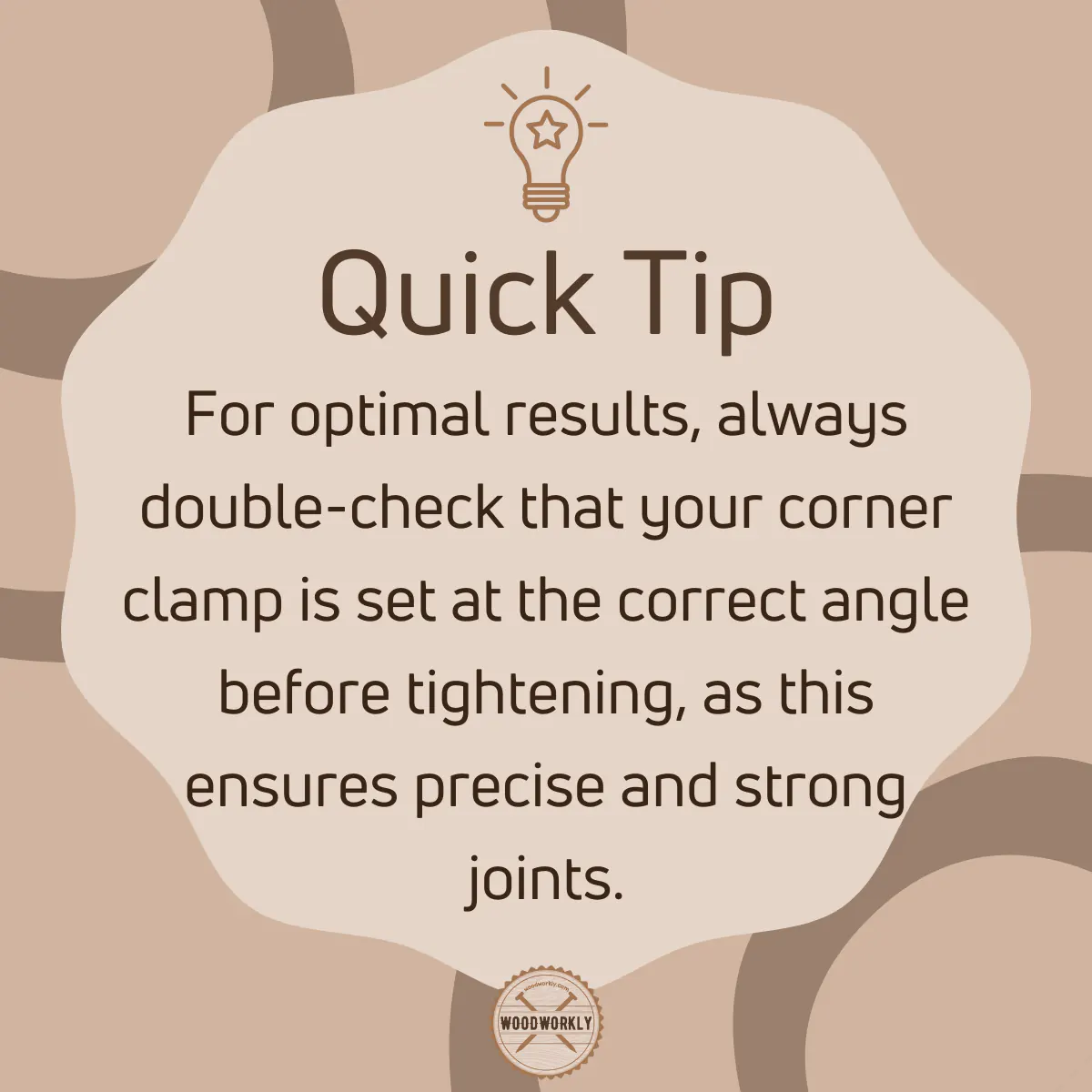
So, let’s answer some frequently asked questions.
FAQs
What types of projects benefit most from corner clamps?
Projects requiring precise 90-degree or 45-degree angles, such as picture frames, cabinets, and drawers, benefit significantly from corner clamps.
How many corner clamps do I need for a project?
Typically, two corner clamps are sufficient for a single joint, but you may need more for larger projects involving multiple joints at the same time.
Are corner clamps worth the investment?
Yes, corner clamps are worthwhile for maintaining accurate alignments and angles, minimizing errors, and speeding up the assembly process.
What are the alternatives to using corner clamps?
Traditional clamps and makeshift jigs can also be used, but they may not offer the same level of precision and ease as corner clamps.
What is the best type of corner clamp?
The “best” type varies by need, but options include quick-release, single-screw, and double-screw corner clamps.
Are parallel clamps a good substitute for corner clamps?
While parallel clamps are versatile and strong, they may not offer the specific angle support that corner clamps do.
Can corner clamps be used with adhesives like wood glue?
Yes, corner clamps are excellent for holding pieces in place securely until wood glue or other adhesives fully set.
Did I cover all you wanted to know about: Are Corner Clamps Necessary?
In this article, I have deeply discussed are corner clamps necessary, and how important is to have corner clamps as a woodworker to join wood pieces with precise angles.
Corner clamps are not necessary, but they are useful for maintaining alignment and provide support to hold two items. Corner clamps hold the clamping surface steady at 90 degrees or 45 degrees to one another. Corner clamps are used to make picture frames, cabinets, boxes, and cases with T-joints, miter joints, and butt joints.
Furthermore, I’ve answered some frequently asked questions as well.
Hope you have gained good knowledge about are corner clamps necessary and the uses of corner clamps.
Try to use corner clamps when making picture frames and assembling cabinets and drawers to make the perfect 90-degree angle between wood pieces easily with high satisfaction.
Happy woodworking with corner clamps!